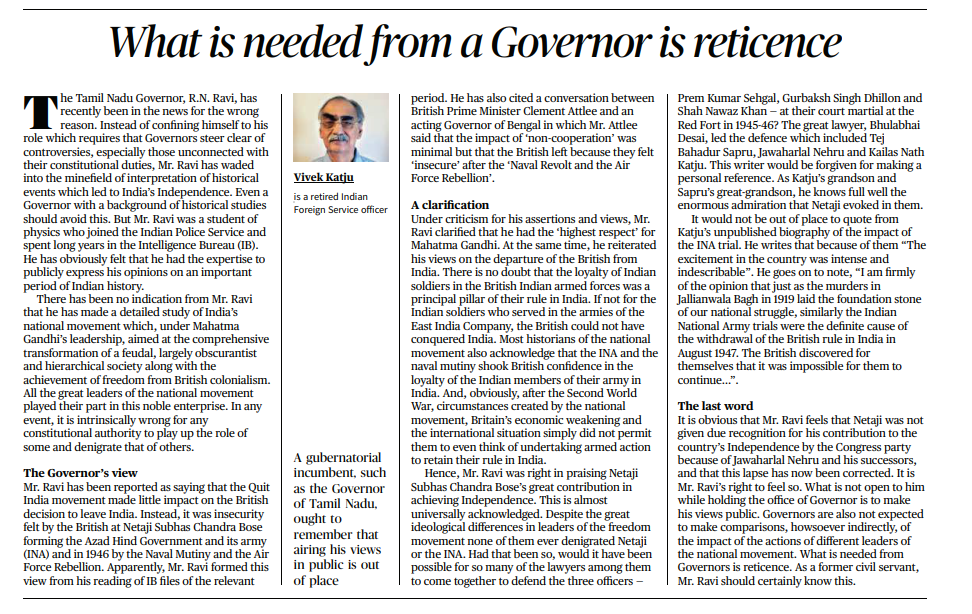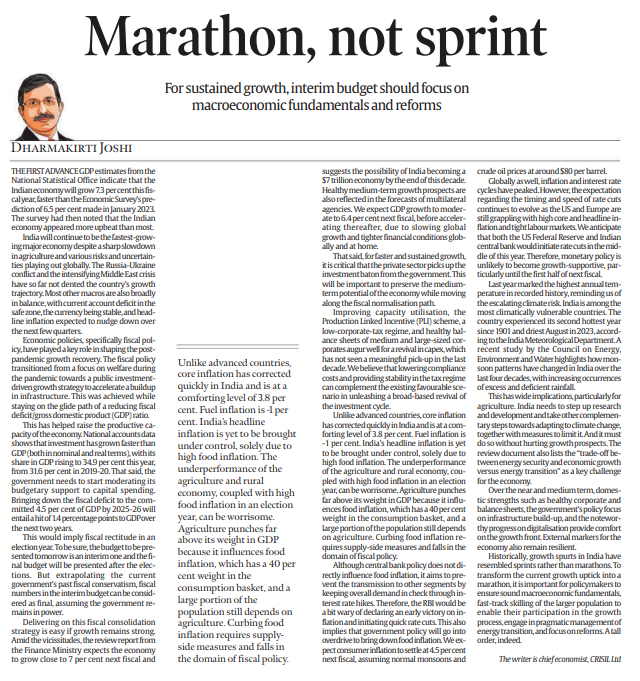Introduction: President Macron’s Third Visit
- Emmanuel Macron’s third visit to India as the Chief Guest on Republic Day underscores the special nature of the “Strategic Partnership” between India and France.
- The visit follows Prime Minister Narendra Modi’s visit to France in 2023, highlighting the robust ties and personal rapport between the leaders.
Historical Context: Origins of Strategic Convergence
- The roots of the strategic partnership can be traced back to 1998 when French President Jacques Chirac declared India’s exclusion from the global nuclear order as an anomaly.
- France displayed understanding and support during India’s nuclear tests, becoming the first P-5 country to endorse India’s claim for a permanent seat in the reformed UN Security Council.
- Both nations, despite different post-war trajectories, embraced multipolarity and sought strategic autonomy, fostering a natural convergence of interests.
Building the Partnership: From Nuclear Dialogue to Comprehensive Collaboration
- The strategic dialogue initiated in 1998 expanded to include nuclear, space, and defense cooperation, evolving into broader areas such as counter-terrorism, intelligence sharing, and cyber-security.
- Defense collaboration witnessed significant milestones, including the government-to-government agreement for 36 Rafale aircraft, contributing to India’s aerospace industry growth.
- Macron’s visit marked the conclusion of the India-France Defense Industrial Roadmap, aligning with India’s goal of ‘atmanirbharta’ (self-reliance).
Space and Technology Collaboration: Strengthening Ties
- Cooperation in space, dating back to the 1960s, has been revitalized, with joint missions and collaborations between ISRO and the French Space Agency.
- Agreements between Indian and French companies, such as Tata Advanced Systems Ltd. and Airbus, indicate progress in technology sharing, aircraft development, and space domain awareness.
Broadening and Deepening the Partnership: Beyond Governmental Domains
- The challenge is to extend the partnership beyond government domains into commercial and civilian spaces.
- Joint working groups covering agriculture, environment, civil aviation, IT, and telecom showcase efforts to diversify collaboration.
- The success story includes a significant increase in Indian students pursuing higher education in France, with plans to reach 30,000 by 2030.
Economic Ties: Strengthening Business Links
- Over 1,000 French companies, including 39 from the influential CAC 40, operate in India, while 150 Indian businesses have a presence in France.
- Post-Brexit, France has become an entry point for Europe and the Francophonie, reflecting the evolving dynamics of economic engagement.
Maturity and Resilience: Nurturing Ties Over a Quarter Century
- The India-France ‘Strategic Partnership’ demonstrates maturity and resilience, acknowledging that convergence on all issues is not necessary.
- Differences are addressed privately, reflecting the depth and stability of the bilateral relationship cultivated over the last quarter-century.
Conclusion: A Forward-looking Partnership
Macron’s visit emphasizes the forward-looking nature of the India-France partnership, highlighting shared values, strategic autonomy, and collaborative efforts in diverse domains.
Introduction
The Tamil Nadu Governor, R.N. Ravi, has stirred controversy by delving into the interpretation of historical events related to India’s Independence, deviating from the conventional role expected of Governors to avoid controversies.
Inappropriate Historical Commentary
- Ravi, a former physics student turned Intelligence Bureau officer, has expressed opinions on India’s national movement without demonstrating a detailed study.
- His commentary has been criticized for selectively highlighting certain events and undermining the comprehensive transformation sought by Mahatma Gandhi’s leadership.
Governor’s Controversial View
- Ravi contends that the Quit India movement had minimal impact on British departure, attributing it instead to the insecurity caused by Subhas Chandra Bose’s Azad Hind Government, the INA, and post-war events like the Naval Mutiny.
- These views, reportedly based on IB files, have drawn scrutiny.
Clarification and Counterarguments
- Facing criticism, Mr. Ravi clarified his respect for Mahatma Gandhi but maintained his views on British departure.
- The editorial highlights the significance of Indian soldiers’ loyalty and acknowledges the impact of INA and the Naval Mutiny on British confidence, suggesting that Mr. Ravi’s praise for Bose’s contribution is valid.
Historical Significance of INA Trials
- The highlights emphasizes the importance of the INA trials, quoting from Kailas Nath Katju’s unpublished biography, asserting that they were a decisive cause for the British withdrawal in 1947.
- It refutes any notion of denigration by leaders of the freedom movement towards Netaji or the INA.
Governor’s Role and Responsibility
- Ravi’s public expression of personal views is criticized as inappropriate for a Governor, who should refrain from making historical comparisons among leaders of the national movement.
- The editorial emphasizes the need for Governors to exercise reticence, especially considering Mr. Ravi’s background as a former civil servant.
Conclusion
In conclusion, the editorial highlights the right of Mr. Ravi to hold personal views but underscores the impropriety of making them public while holding the office of Governor. It emphasizes the importance of Governors maintaining reticence and refraining from making historical comparisons, even indirectly.
Positive Growth Outlook: Exceeding Economic Survey Predictions
- The first advance GDP estimates by the National Statistical Office project a robust 7.3% growth for the Indian economy in the current fiscal year, surpassing the earlier Economic Survey’s prediction of 6.5% in January 2023.
- Despite global uncertainties, including the Russia-Ukraine conflict and Middle East tensions, India remains the fastest-growing major economy.
Fiscal Policy Driving Post-Pandemic Recovery
- The shift in economic policies, particularly fiscal policy, has played a pivotal role in the post-pandemic growth recovery.
- A transition from pandemic-focused welfare to public investment-driven growth has accelerated infrastructure development, raising the economy’s productive capacity.
- However, a cautionary editorial suggests the need for moderation in budgetary support for capital spending.
Private Sector’s Role in Sustained Growth
- For sustained and accelerated growth, emphasis is placed on the private sector taking the lead in investment.
- Factors such as improving capacity utilization, the Production Linked Incentive (PLI) scheme, low corporate taxes, and healthy corporate balance sheets create a favorable environment for a revival in capital expenditure (capex).
Inflation Dynamics and Concerns in an Election Year
- While core inflation is at a comfortable 3.8%, high food inflation poses a challenge, particularly in an election year.
- The underperformance of agriculture and the rural economy necessitates supply-side measures falling under fiscal policy.
- The expectation is for consumer inflation to settle at 4.5% next fiscal, contingent on normal monsoons and stable crude oil prices.
Global Economic Landscape and Monetary Policy
- Globally, inflation and interest rate cycles have peaked, but uncertainties persist.
- The anticipation is that both the US Federal Reserve and the Indian central bank may initiate rate cuts in the middle of the year.
- However, until then, monetary policy is unlikely to be growth-supportive, especially in the first half of the next fiscal year.
Climate Risks and the Need for Sustainable Growth
- Highlighting the escalating climate risk, India, among the most climatically vulnerable countries, must balance energy security with economic growth during the energy transition.
- A focus on research and development, along with measures to adapt to climate change without compromising growth prospects, is imperative.
Long-Term Growth Challenges and Recommendations
- The document emphasizes the need for sound macroeconomic fundamentals, widespread skilling, pragmatic energy transition management, and continued focus on reforms to transform the current growth uptick into a sustained marathon rather than a sprint.
In conclusion, while India’s economic outlook appears promising, addressing challenges and maintaining a balanced approach across fiscal, monetary, and climate policies is crucial for sustained and inclusive growth.




